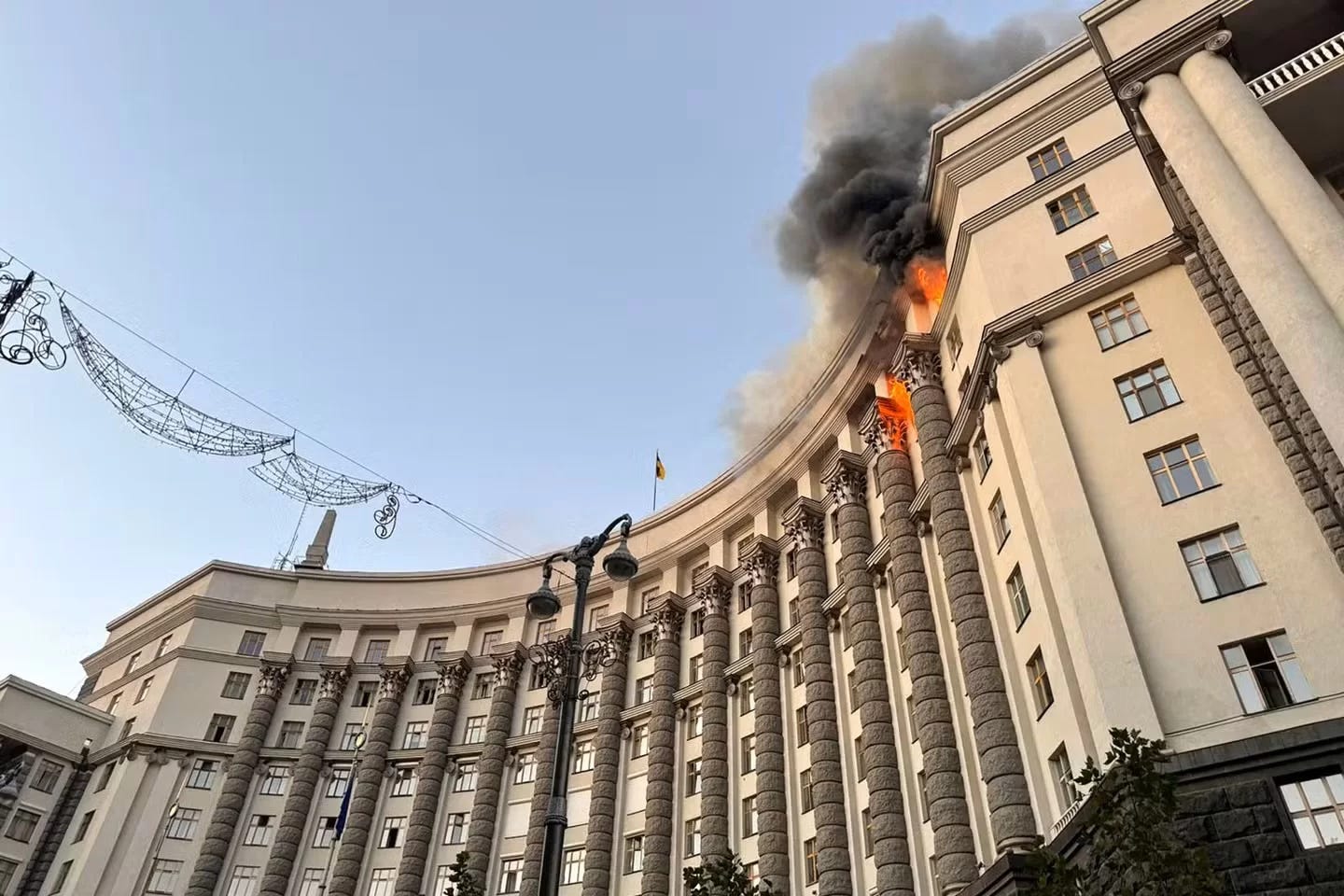Kyiv Reels as Air Defences Strain
Russia kills 24 in Donetsk and sets Kyiv government buildings ablaze. Air defences were pierced by ~60 drones, exposing gaps. With winter looming, Moscow shifts to power and gas targets—pressuring Ukraine’s economy, morale, and Europe’s security calculus.
What happened?
Russia hit the Donetsk village of Yarova, killing at least 24 people, mostly pensioners waiting in line for their benefits, hours after launching the largest air assault of the war. This attack set the central Kyiv government building on fire for the first time since 2022. Ukraine says the barrage combined drones and missiles, reflecting a shift toward glide bomb and mass drone tactics.
Why does this matter?
War over engagement: Striking a seat of government and civilian queues underscores Moscow's preference for war while diplomacy stalls, and only serves as a strategy to gain time.
Air-defence saturation: Ukraine intercepted many projectiles, but missiles and ~60 drones penetrated, exposing gaps around the capital.
Energy war 2.0: Kyiv warns that Russia is refocusing on power and gas assets, replaying the strategy from previous winters. This strategy is designed to reduce output and morale. Meanwhile, members of Ukraine's elite are secretly beginning to advocate for capitulation to save the cities.
What’s next?
Ukrainian authorities expect renewed mass missile and drone raids against energy and other critical infrastructure. Regional officials have already reported power outages around Kyiv following recent strikes. Air-raid alerts and civil guidance to prepare for outages persist as Russia rotates aircraft and maintains Kalibr-capable platforms on duty.
finformant view
Moscow's strategy is clear: attrition plus winter grid pressure to force concessions. Near-term peace prospects are fading as battlefield leverage and urban terror are outpacing diplomacy. The EU budget will need to shift further toward defense and Ukraine support as financing gaps are likely to emerge.




